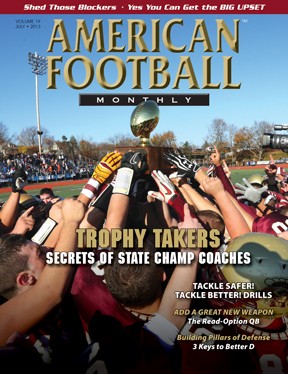AMERICAN FOOTBALL MONTHLY THE #1 RESOURCE FOR FOOTBALL COACHES
Article CategoriesAFM Magazine
|
CONCUSSIONS IN YOUTH FOOTBALL – ARE WE THINKING CLEARLY?© More from this issueBy Rey Hernandez Former Head Coach, LaJolla High School (CA) The current legislative proposals seeking to limit full contact in high school practices raise some tort liability issues that to date have not made it into the national concussion safety debate. One may safely conclude that teaching your athletes how to tackle is important from both an execution and safety standpoint. But in light of the recent legislative proposals to limit full contact sessions one must ask the question, when is a coach exposing himself to tort liability for not sufficiently practicing live tackling duri....The full article can only be seen by subscribers.
|
|
|||||||
| HOME |
MAGAZINE |
SUBSCRIBE | ONLINE COLUMNISTS | COACHING VIDEOS |
Copyright 2025, AmericanFootballMonthly.com
All Rights Reserved





